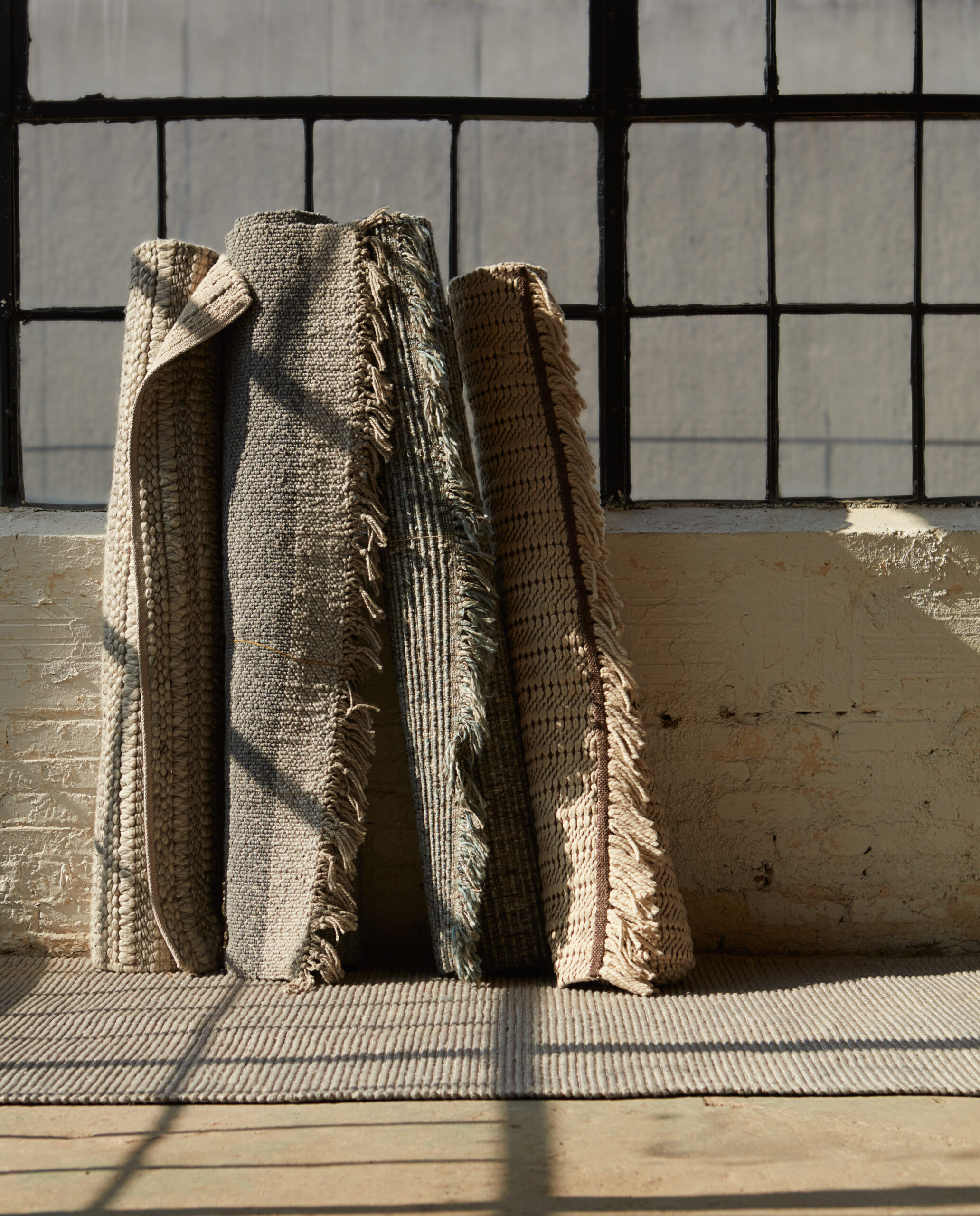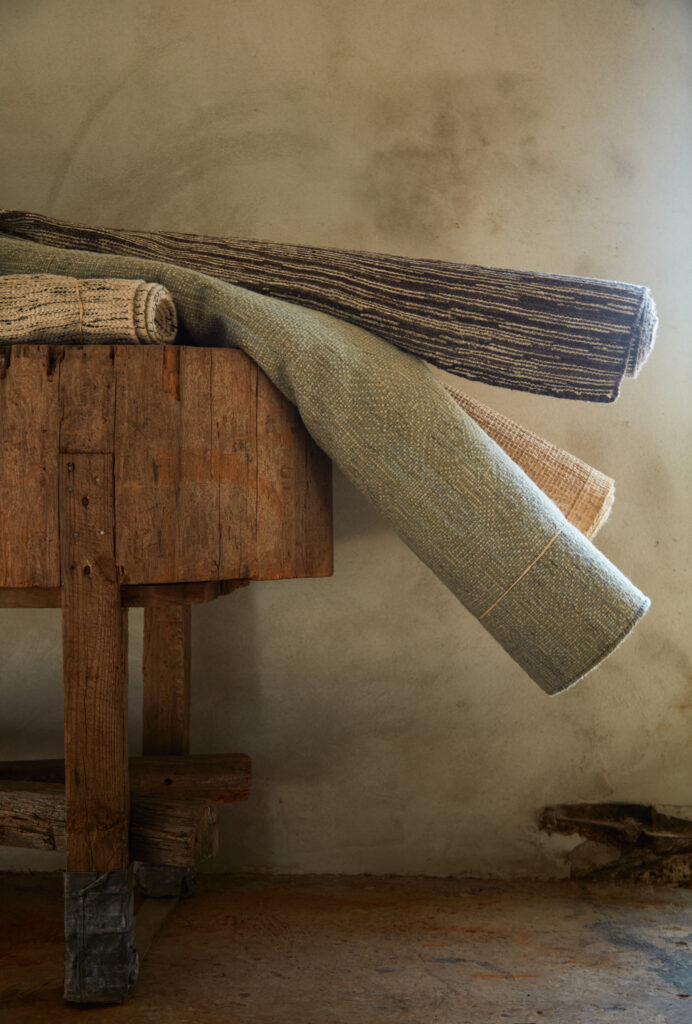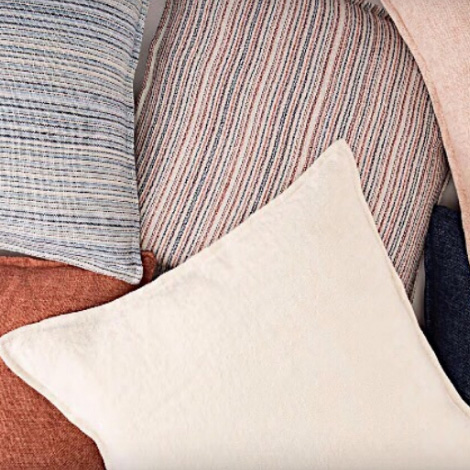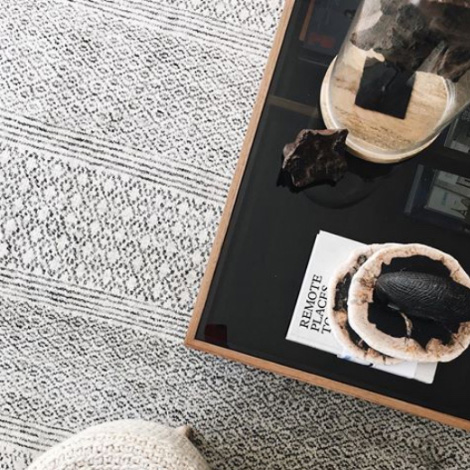Whether moving, renovating, or redecorating, the start of each year brings with it the desire to toss out the old and install the new. Embrace the spirit of renewal while protecting your rugs—here’s everything you need to know about safe rug storage.
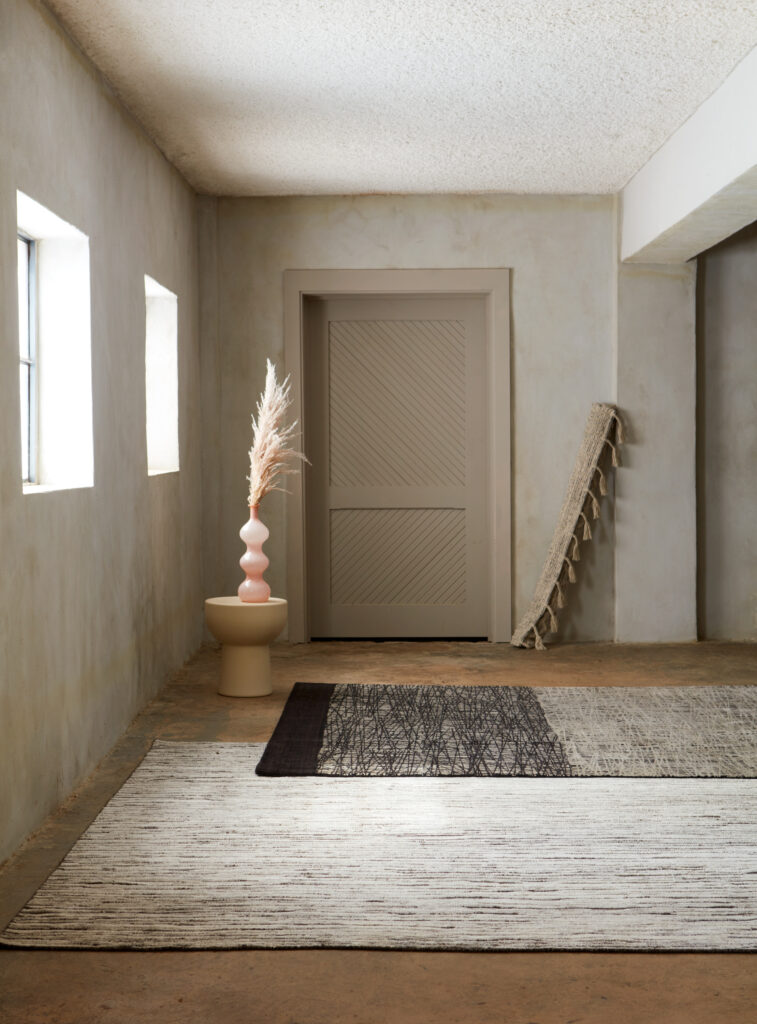
Jaipur Living‘s Free Verse Light, Reign, and Calixta collections
Proper Prep
For indoor rugs, Jaipur Living experts recommend vacuuming according to suggested care to remove any dirt prior to rug storage. While vacuuming guidelines vary according to construction and material, the general recommendation is to vacuum with the beater bar off to protect the weave and fibers.
For naturals—think jute and sisal—trim stray tufts with scissors in addition to light vacuuming. Wool-blend rugs follow similar vacuuming rules, as do rugs that are made from 100% wool. However, with newer 100% wool rugs, know that shedding is normal and will reduce over time. For rugs with longer fibers like shags, shake smaller sizes to loosen any dirt and dust. For larger sizes, use a hand-held or upholstery attachment to vacuum.
If needed, have the rug professionally cleaned before storage. For more on proper rug care, read our Care & Cleaning Guide.
See also: Material World: Inside Viscose
Season’s End
For indoor-outdoor styles, it’s recommended rugs be cleaned at the end of each season. However, with the lines between the indoors and out continuing to blur and all-season rooms becoming increasingly popular in more temperate climates, clean or remove stains as needed with a mild soap. Rinse with clean water, or even a garden hose, and hang the rug to dry.
Before storing, ensure your rug is thoroughly dry post-cleaning. Indoor-outdoor rugs—typically made from polyester, polypropylene, and PET yarn, which is fabricated from recycled plastic bottles woven into a soft and durable fiber—can be vacuumed regularly with the beater bar off. Professional cleaning is also suggested before rug storage.
For more on rug materials and constructions, consult our Rugs 101 Guide.
See also: 4 Design Resolutions To Take On The New Year
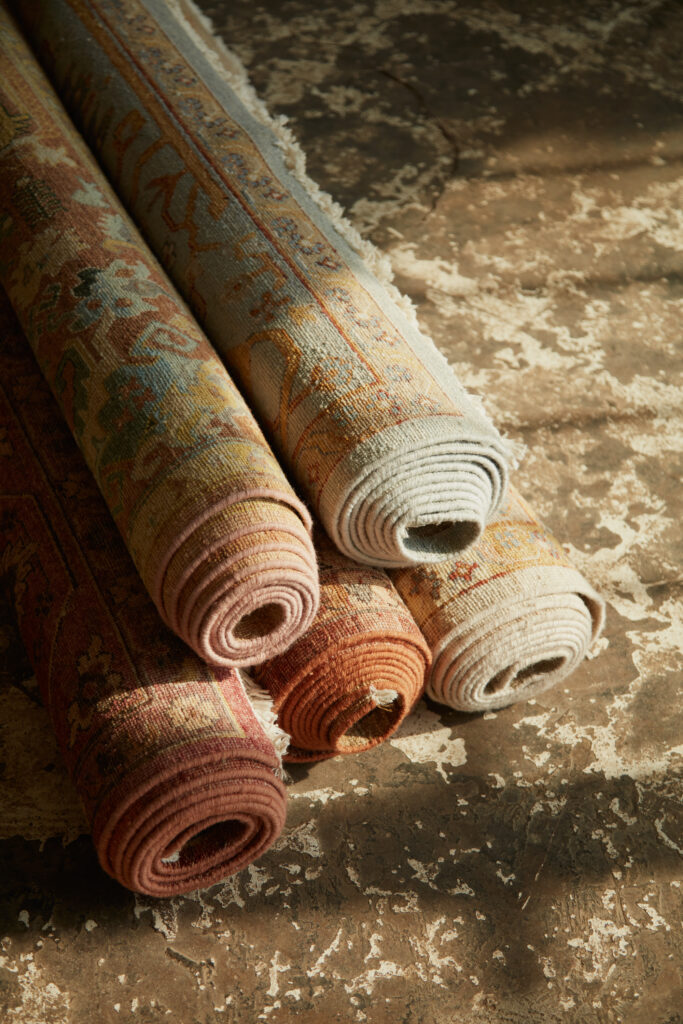
Jaipur Living’s Someplace In Time collection is exclusive to interior designers through the Designer Edit program.
Inside Track
Correctly rolling the rug is just as important as cleaning the fibers in preparation for safe storage. Once thoroughly cleaned and prepped, lay the rug flat and place an appropriately sized cardboard rug tube on top. Roll the rug with the pile facing inward around the rug tube. When rolling, make sure to keep the rug even and straight around the tube.
Outer Shield
Once rolled, wrap the rug with a protective outer cover. Breathable fabrics, such as cotton, are recommended. The outer layer will not only preserve and protect your rug, but it will also help keep pests out. Plastic wrap should be avoided, as it can trap moisture and lead to mold and mildew.
See also: Undyed Wool: Inside Eco Friendly Design’s Hero Material
Upper Hand
Finally, it’s time to store your rug. Place the rolled and wrapped rug horizontally on an elevated surface. It should be stored off the ground in a cool, dry environment. Avoid leaving rugs rolled vertically: The weight can lead to bends and wrinkles over time.
Next story

